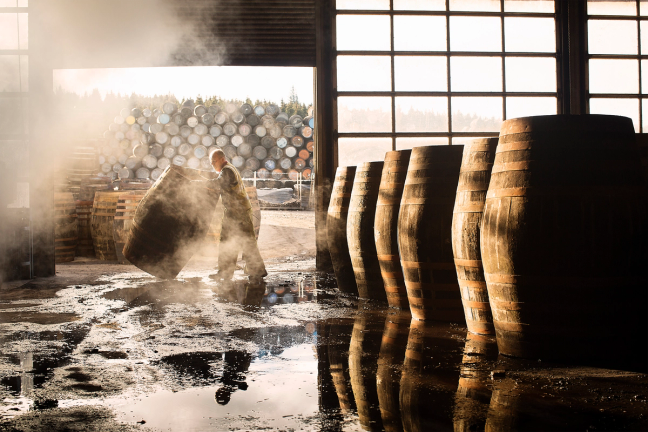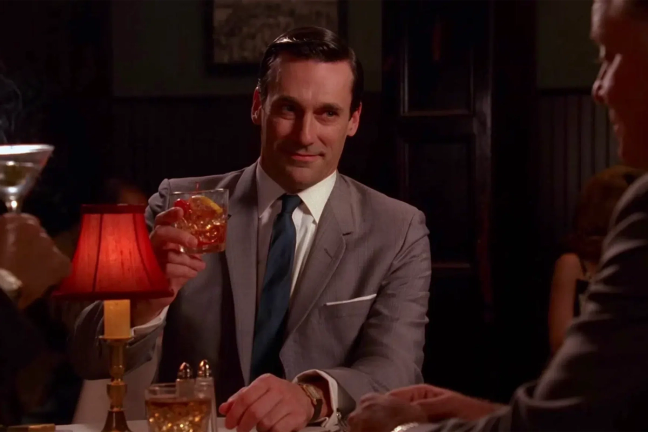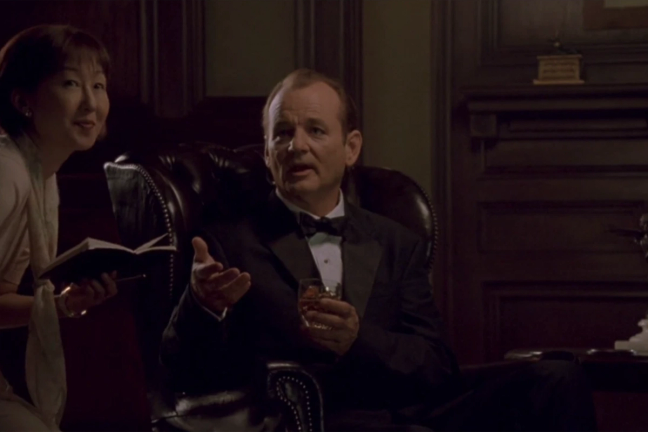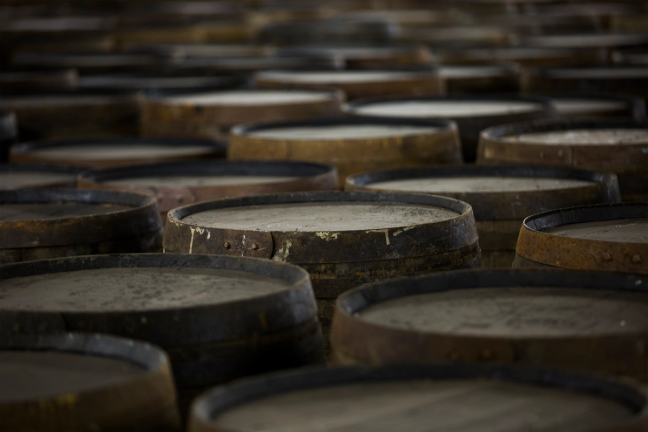Exclusive: we asked Sotheby’s spirits expert why whisky is so valuable these days
“Whisky tends to track economic cycles, and the US economy is relatively strong on a global basis”
If there were anything to glean from fables of forgotten barons and industrialists, it might be that consuming hard liquor is an easy way for one’s riches to vanish. These days, however, it’s often held that investing in the strong stuff might just be a surefire method to make your money – in recent times, whisky, rather notably, has been a common fixture on lists detailing high-worth assets one should have.
Recently, new findings from IWSR, an authority on data regarding the alcohol market, showed that ‘status spirits’, lead by Scotch, are outperforming the wider alcohol category. On the back of the report, we spoke to Jonny Fowle, Sotheby’s global head of spirits, to discuss the causes behind whisky’s rise in value, and why it might be prized more than Cognac.

Image: Getty
GJ: So, the headline from the report is that ‘status spirits’ – notably Scotch – outperformed the wider alcohol category in 2023. Why is Scotch – and the premium-whisky/whiskey market in general – doing so well?
JF: It’s pretty difficult to pinpoint exactly why, but I have a hot take on this: around the time that the premium end of the market – single-malt, specifically – started taking off, it seemed to coincide roughly with what I would call box-set culture. In shows like Boardwalk Empire, Mad Men, The Sopranos, there were a lot of leading characters who were sort of, I guess, quintessential alpha males, who were drinking a lot of whisky – and it seemed that there was a real cultural evolution of the idea of whisky as a status symbol around the same time.

Don Draper, of the TV show Mad Men
It could be by coincidence, or it could be more manufactured, that the way that whisky was marketed at the time sort of followed that trend. And now whisky is obviously becoming much more diverse, and I think it reaches a broader audience, but that seems to be the genesis for the increase in sales.
Regarding the box-set culture aspect – would it be correct in saying, then, that this rise preceded the pandemic, a period in which people were able to binge more TV?
At the very beginning, it goes back before that. [The ascent of] Japanese whisky, for instance, probably goes back to the release of Lost in Translation. That was probably the exact moment. But then, more recently, we’ve seen exponential growth over a series of years, which was for a mixture of reasons. For instance, in the pandemic, people were tied to their desks – or their houses, rather. They weren’t going out to drink, the drinks were coming in, and they were buying full bottles, and the prices were going up and up. And people were beginning to enjoy collecting for the sake of collecting, rather than just buying to drink.

Bill Murray filming the famous/infamous whisky scene in Lost in Translation
Simultaneously, the whisky producers targeted people who were looking to collect. And I think the evolution of the industry is not just the way people bought, but it’s the way that whisky companies have presented their product to people. So now you see plenty of high-age statements, high value, very collectible whiskies, which 10 years ago just didn’t exist. There seems to be a symbiosis between the culture of collectors and the output of producers.
Is it currently a rush, would you say?
I would say between 2017 and 2019, the interest in whisky, particularly single malt, seemed to be exponential, and that did feel like a bit of a rush. And that coincided with the rise of the new middle-class in China. And there was a big push that we really have Asia to thank for. But post-pandemic, it seems like that has swung to the West, and now it’s really the Americans who are coming out, particularly at the top level.
“We saw about 1,000 per cent growth over the course of four years, from 2019 to 2023”
On a similar note: Sotheby’s Wine and Spirits 2023 Market Report showed that while auction bidders in Asia are leading the spirits market, the US remained the country spending the most on spirits at auction. Can you elaborate more on these two markets?
When I joined Sotheby’s, in 2019, that year, 80 per cent of the whisky we sold went to Asia. And now it’s a much more even spread across the globe. I would describe it as a smile curve if you looked at a map, where the East and the West do proportionally the most buying, and there’s a bit of a slump in Europe and the UK. Right now, whisky tends to track economic cycles, and the US economy is relatively strong on a global basis – and that seems to be, probably, the deciding factor.
But equally, I think that we can’t overlook the efforts of whisky companies to market or to distribute to these places. The Glenlivet, for instance, is the top-selling single-malt in the US – and you can see that’s a company that puts a lot of energy into that market, and I think they see the results from that. [For the Sotheby’s London Finest & Rarest Whisky sale, The Glenlivet has produced a one-of-one bottle: The Glenlivet 55 Year Old, 200th Anniversary Edition. ‘The key difference between the other 55 Year Old, which you can find around the world, and the one that’s exclusive to Sotheby’s is the liquid itself – the alcohol percentage on the bottle is different,’ says Fowles. ‘The standard version is 42.2, the Sotheby’s one is 42.8, which makes a huge difference. While the packaging is spectacular [[notably, the bottle arrives on a plinth by Michael Hansmeyer]] it’s a whisky product at its core.’]

The Glenlivet 55 Year Old, 200th Anniversary Edition
So, as you mentioned before, it’s a two-way relationship?
There’s an extent to which you get organic growth and consumer trends that are built by the community of collectors. But it’s not without influence from the brands themselves, or from the accessibility to the brand. And that doesn’t necessarily mean that it’s readily available. It could be that the information about the brand is accessible, but the brand itself is actually quite hard to come by – and that’s when you get increase in price through the supply-demand conundrum.
Are trends at auction and in the mass market in tandem with each other?
The growth, generally, has been pretty substantial. At Sotheby’s, we look at the increase in sales from wine and spirits cumulatively. Both categories have increased. Whisky, particularly, has increased proportionally more quickly. I actually met with an old colleague recently – she said, when she was at Sotheby’s, in the wine department, spirits made up 2 per cent of the end of year [2018], and now it’s more like 25 per cent for the combined wine and spirits total. We saw about 1,000 per cent growth over the course of four years, from 2019 to 2023.

Image: Getty
Going back to the IWSR report – Scotch has pushed Cognac/Armagnac into second place. Why do you think that has happened?
Again, this is a hot take, but this is sort of what I see in the feedback that we get from clients, or the trends that we see: when you get a product like this from The Glenlivet, which is a unique bottle, unique whisky, you know exactly how old it is, you know the ABV; with Cognac, you don’t really get the same level of transparency. So the things that tend to drive the whisky market to the highest level are: single vintage, single cask, age statement, high ABV – whereas in Cognac, you tend to have a more opaque offering.
The bottle will say it’s old, XO, or whatever it may be, but it’s very non-specific. And I think as collectors are understanding the whisky market more, the increased specificity that Scotch whisky – and single malt, particularly – offers seems to appeal quite a lot. And I think that’s the big thing: the understanding of precisely the bottle that they’re collecting and the provenance of the liquid, in terms of its production and maturation journey. It seems to be the turning point that has made Scotch whisky skyrocket.
*This interview has been condensed and edited for clarity
Want more drinks content? Win the ultimate home bar courtesy of the Gentleman’s Journal 2024 Drinks Awards…

Become a Gentleman’s Journal Member?
Like the Gentleman’s Journal? Why not join the Clubhouse, a special kind of private club where members receive offers and experiences from hand-picked, premium brands. You will also receive invites to exclusive events, the quarterly print magazine delivered directly to your door and your own membership card.


